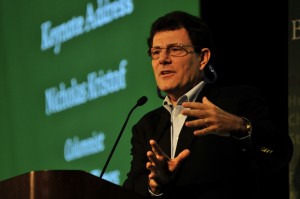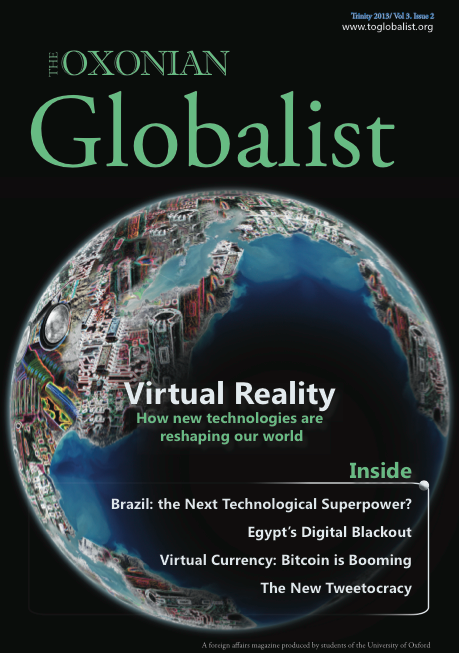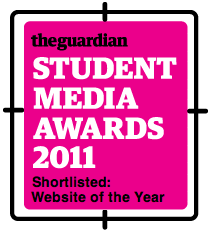
Hero or Villain? Kristof gives a speech at a conference on biofortification in Washington D.C. Photo by Harvest Plus via Flickr.
Disconnected from the suffering that takes place in distant developing countries, we rely on the words of public figures and first hand observers to better understand epidemics, wars or poverty. We see the world through their eyes, and our vision is shaped by their accounts.
These accounts are usually crafted by the same gaze most of the world is filtered through and documented by – the upper middle-class, white, male, often New York-based establishment. While it is not their class, race, gender or location that is inherently problematic, this group of people is influential and has somehow developed a homogenous discourse and set of practices. Their outlook shapes the views of a new generation who is eager to go out and emulate them.
One of the most representative members of the group of humanitarian heroes is Nicholas Kristof; a witness many rely on, follow and hold in esteem. With his Times column and two Pulitzer prizes, our Oxford alumnus is widely read. Of course the cult of these self-appointed spokesmen for the disenfranchised exists elsewhere, in other fields and media, and the now debunked Greg Mortenson, Bono, or other high-profile academics and philanthropists such as Sachs, Soros or Gates have a similar message and crowds of admirers.
The issue of voice
Kristof writes about trauma wherever he finds it. As Jina Moore puts it in the Columbia Review of Journalism: “Trauma stories require the writer to consider the reader, listener, or viewer as a partner in the creation of ethical journalism. Our choices as craftsmen – about identity and attribution, about detail, about writer’s voice, about structure and style, and even about medium – do more than simply tell the story. They tell readers about our values”. Kristof crafts stories around himself, for his audience, and the “subject” is rarely a partner in the process.
When Kristof reports on the Cambodian sex slaves he buys off to then try to return to their families, or when he tweets live from the brothel raids, his voice is the loudest, and overshadows the social “background noise”. The ethical issue of consent arises. A woman who has worked with former “sex slaves”, including the ones Kristof interviewed, claimed that these women did not want to be the face of trafficking, and that they were pressured into “sharing their story”. They felt parts of their stories were exaggerated and altered, transforming their lives into myths. They complained about not getting compensated for their stories being retold and re-written numerous times while Kristof is being praised and paid for his heroic acts of journalism.
I critique Kristof not only for his reporting, but more specifically for his self-proclaimed heroic mission to “save lives”. If Kristof was merely a columnist, I could partly blame the media and its commercial nature and restrictions for his misleading reporting, but he sees himself on a great humanitarian mission. Further, he often does more than passive and misdirected journalism, he perpetuates the problem. When he bought “sex slaves”, he made their pimp richer. Perhaps one can understand Kristof’s impetuous actions, trying to momentarily alleviate the suffering these teenagers may be experiencing. However, by writing about this, Kristof does not only engage once more in self-glorification but he also deceives his audience into thinking that buying sex slaves may be a solution. Without properly insuring the reintegration of the young women in society – because they were sold by their families in the first place – the girls probably returned or will be returned to where Kristof found them. After Kristof leaves, no one knows what happens to these lives altered by Kristof’s money and power, but Kristof, on his plane back home, receives congratulatory tweets from Laura Bush and his other aficionados. Kristof’s journalism is clearly voyeurist and objectifying when we hear that these girls felt exposed and used in his stories. He also fails to look at the teenagers’ attempts to negotiate and improve their situation, which undermines the complexity of the social situations they find themselves in – circumstances in which the good and evil is not as obvious as Kristof describes it to be.
Why this cult is problematic
Kristof’s work influences young people who idolize and want to emulate him. Last year, at a talk in North Carolina, I saw a group of about fifteen year-old girls gathering at the end of the lecture around Kristof’s book signing booth, hysterical, holding their copy of Half the Sky, eager to win his assistantship trip, meet war lords and travel on mud roads with him. There was something troubling about the scene; I rarely saw such teenage fanaticism for a journalist. Kristof’s young audience might be seduced by the impression that they can change the world; perhaps he infuses some hope to an otherwise cynical portrayal of life in the media. In his talk, he encouraged them to go abroad and change problems they see. More amateurs abroad is not always the solution (in fact it rarely is) but Kristof also fails to see the stories that are not triggered by a good American Samaritan; the grass-roots successes. With his words Kristof creates a generation of American youth who wants to witness the victims of famine and conflicts – not necessarily to find sustainable solutions, or to think critically about how to work to change the system – but to be able to say that they were there, and write about giving their own blood to the dying mother in Congo, as Kristof did.
Kristof engages with problems superficially, and consequently his readers do the same. As Prasse-Freeman wrote in the New Enquiry, Kristof knows how to play orientalist and racist fantasies of his audience. “[His] distancing double move provides us with precisely what is worse than a bourgeois not knowing about the world’s horrors: knowing about them only enough to simultaneously acknowledge and dismiss them, to denude them of political and moral demand, to turn them into consumable and easily digestible spectacles. We are encouraged to look only so we can then close our eyes.” His journalism makes us passive, and discourages true involvement. Kristof sees the world as a series of easy-to-solve problems. For example, in his book Half the Sky, he argues that women stay out of schools during their periods because of lack of sanitary products. Thus, the solution is easy: one should simply provide sanitary towels and tampons. He dismisses culture, beliefs and institutions, and in his imaginary world of easy-fixes he insults locals and NGOs who have been working on these challenges for decades.
We find ourselves in a cafeteria of media outlets and journalism options, and it is not easy to choose a critical, ethical and culturally-sensitive meal. While Kristof’s stories might not taste problematic at first, their ingredients have bitter post-colonial, exoticising, white man’s burden after-taste. There are different ways to impact lives and make a difference, but it rarely only involves a five-day stay in a country and throwing money at problems. There are no easy-fixes, and solving problems require time and collaboration, but of course this is hard to convey in a 140-character tweet.



